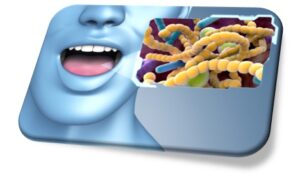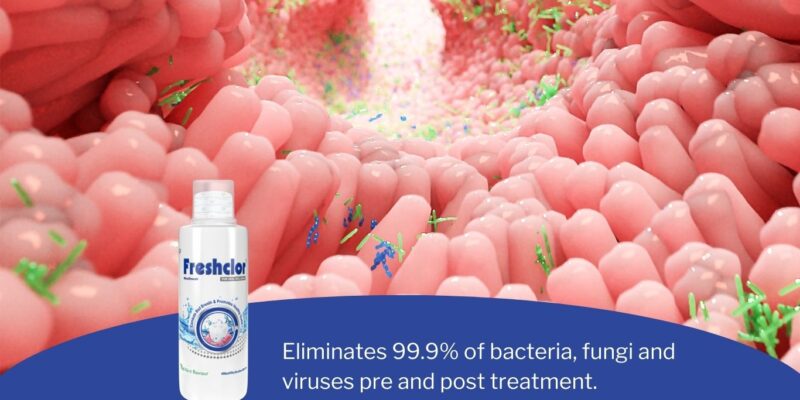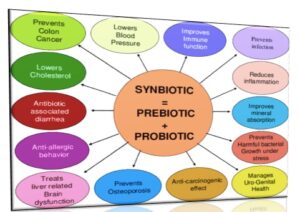A Peep into Probiotics
For a very long time, bacteria have been associated with illness. Thus, the concept of employing microbes to improve health has a mystical feel to it. A clear definition of the term “probiotics” was established in 2003. Probiotics are live microorganisms that mimic the beneficial bacteria, usually bacteria, that are present in the intestines of humans. They are also known as “friendly bacteria” or “good or healthy bacteria.” They can boost immunity, which strengthens our defences against predators. Probiotics are dietary supplements that include specific yeasts or potentially helpful bacteria. In addition to suppressing pathogens that cause and spread disease, they stimulate flora that promotes health.1,2

Today in dentistry, chronic periodontitis has become a huge problem. The major objective of treating chronic periodontitis is to deal with the underlying cause. Gains in clinical attachment levels are accompanied by a decrease in periodontal pocket depth following successful treatment of chronic periodontitis. Scaling and root planing together with other nonsurgical periodontal therapy measures have long been the mainstays of treatment for chronic periodontitis.3
When scaling and root planing therapy alone is ineffective in these complex disorders, adjunctive therapies like probiotics or antibiotics may be helpful.
Probiotics + Prebiotics + Synbiotics
Probiotics are named after a Greek word that means “for life.” Probiotics are live, non-pathogenic bacteria given to a host to balance his microbiome. Prebiotics and probiotics work in conjunction to produce beneficial outcomes.4
Prebiotics are substances found in food that aid in the development or heightened activity of the host’s probiotic microbes. In essence, these prebiotics are indigestible fibrous substances.
Lastly, synbiotics are food ingredients or dietary supplements that synergistically combine probiotics and prebiotics.5

Significance of Probiotics, Prebiotics and Synbiotics
The most important and documented beneficial effects of probiotics include the prevention of diarrhea, constipation, changes in bile salt conjugation, enhancement of anti-bacterial activity, anti-inflammatory. Furthermore, they also contribute to the synthesis of nutrients and improve their bioavailability; some probiotics are known to exert anti-oxidative activity in the form of intact cells or lysates.4
Prebiotics are mostly fibers that are non-digestible food ingredients and beneficially affect the host’s health by selectively stimulating the growth and/or activity of some genera of microorganisms. FAO/WHO defines prebiotics as a non-viable food component that confer health benefit(s) on the host associated with modulation of the oral microbiota.4
Synbiotics seems to be quite attractive proposition for enhancing the immune function. A combination of B. coagulans with inulin in diet for 6 weeks induced a significant reduction in the levels of C-reactive protein and increased glutathione levels. Synbiotic supplementation of Lactobacillus, Bifidobacterium, and 10 % FOS in rats fed with high-fat, low-fiber diet suppressed intestinal and systemic inflammation and the effects were comparable to FOS supplementation.9
Criteria for Choosing Probiotics
- It should be able to improve the host animal’s condition, for as through promoting growth or disease resistance.
- It must be human-made.
- It ought to have a good cell viability rate.
- It should not be harmful or pathogenic.
- It needs to be able to communicate with or alert immune cells.
- It should be able to affect the regional metabolic activity.
- It must be able to survive and function under the conditions of the gut, such as resistance to organic acids and low pH.
- It must be reliable and durable enough to withstand prolonged field and storage circumstances.4
Rationale of Probiotics
When an illness is treated with traditional antibiotics, it gets worse rather than gets better. More multidrug-resistant bacteria appear because of traditional antibiotic treatments, and illness prevention takes precedence over illness treatment.
Probiotics may prevent future pathogens from colonizing, growing, and migrating as well as colonization resistance, the introduction of novel bacterial species, and paradigm shifts in our understanding of the causes of disease.
Probiotics in Periodontics
Inflammation of the periodontal tissues – the gingiva, the alveolar bone socket, the tooth’s outer layer of roots, and the connective tissue around them – is known as periodontal disease. Plaque buildup is the first manifestation of this disease. Bleeding on probing, colour changes, swelling, pain, and, in more advanced stages, tooth mobility are all signs of periodontal disease.5 Probiotics stop the growth of bacteria and prevent the formation of plaque by decreasing salivary pH and producing antioxidants that consume free electrons needed for plaque mineralization. Thus, probiotics offer this kind of protection against periodontal disease.
Probiotic use has been shown in numerous trials to be beneficial in the treatment of periodontitis, gingivitis, plaque buildup, and a significant reduction in periodontopathogens.
The use of probiotics in the prevention and management of periodontal disease is growing. Probiotics improve periodontal health indices, bleeding on probing (BOP), probing pocket depth (PPD), clinical attachment level (CAL), and gingival crevicular fluid (GCF) volume. They also effectively inhibit periodontopathogens and biochemical markers linked to inflammation, such as interleukin (IL)-1β, matrix metalloproteinase (MMP)-8, and tissue inhibitor of metalloproteinase (TIMP)-1.
The primary periopathogens are Treponema denticola, Tannerella forsythia, Aggregatibacter actinomycetemcomitans, and Porphyromonas gingivalis. It has been demonstrated that Streptococcus uberis and oralis prevent the transmission of infections in both animal and lab models.6
Commercially Available Probiotics in Periodontics
Commercially, probiotics can be purchased as lozenges, toothpaste, chewing gum, or mouthwash.
- Gum Perio Balance: This is perhaps the first probiotic that has been created expressly to combat periodontal disease. It includes a patented mixture of two L. reuteri strains that were chosen for their complementary abilities to combat cariogenic microbes and periodontopathogens.
- PeriBiotic: This toothpaste is a fluoride-free, all-natural dental hygiene aid that contains DentalLac, a unique functional probiotic strain of Lactobacillus paracasei not present in any other toothpaste.
- Prodentis: This probiotic lozenge contains a combination of two strains of Lactobacillus reuteri, each of which has a minimum of 1 108 CFU: DSM 17938 and ATCC PTA 5289.
- Bifidobacterium probiotic: In individuals with gingivitis and moderate periodontitis, this probiotics preparation containing a mixture of five active lyophilized lactic acid-producing bacteria is said to enhance several clinical and microbiologic markers.7
Probiotic Safety
-
Before probiotics are put on the market, their safety needs to be properly investigated. Oral use of probiotic strains that have undergone extensive examination and preparation is generally considered to be extremely safe for humans.
2. Newer strains and products need to prove their safety in human studies in order to be considered probiotics.
3. Clear labeling is advised when a strain, like Saccharomyces boulardii (Saccharomyces cerevisiae), places limitations on its use, such as for people who have a leaky gut or are at risk of blood-borne infection.7
Summary
Probiotics have been demonstrated to improve dental health, opening up new possibilities for comprehending how food and oral health are related. To cure or prevent disease, they alter the host’s immune response or the GI microbiota’s equilibrium. The use of probiotics in dental care is growing. There is growing proof that utilizing the probiotic strains that are currently on the market can enhance oral health.
As a result, recommending a course of action that incorporates probiotic dietary supplementation with non-surgical therapy may result in better control over bacterial plaque and so facilitates a successful periodontal treatment. Additionally, they might affect immunological markers. Even though research into the potential benefits of probiotics for periodontal health is still in its early stages, they are a promising therapy option for periodontal disorders.
References
- Rinkee M, Bianca N, Neha S: The potential role of probiotics in periodontal health. Revista Sul-Brasileira de Odontologia. 2012, 9:85-88. 10.21726/rsbo.v9i1.970
- Mack DR: Probiotics: mixed messages. Can Fam Physician. 2005, 51:1455-7.
- Claffey N, Polyzois I, Ziaka P. An overview of nonsurgical and surgical therapy. Periodontol 2000. 2004;36:35-44.
- Guarner F, Perdigon G, Coerthier G, Salminen S, Koletzko B, Morelli L. Should yoghurt cultures be considered probiotic? Br J Nutr. 2005:93;783-786
- Nie Q, Wan X, Tao H, et al.: Multi-function screening of probiotics to improve oral health and evaluating their efficacy in a rat periodontitis model. Front Cell Infect Microbiol. 2023, 13:1261189. 10.3389/fcimb.2023.1261189
- Koll-Klais P, Mändar R, Leibur E, Marcotte H, Hammarström L, Mikelsaar M: Oral lactobacilli in chronic periodontitis and periodontal health: species composition and antimicrobial activity. Oral Microbiol Immunol. 2005, 20:354-61. 10.1111/j.1399-302X.2005.00239.x
- Didari T, Solki S, Mozaffari S, Nikfar S, Abdollahi M. A systematic review of the safety of probiotics. Expert Opinion on Drug Safety. 2014;13:227-239. DOI: 10.1517/ 14740338.2014.872627





















Comments